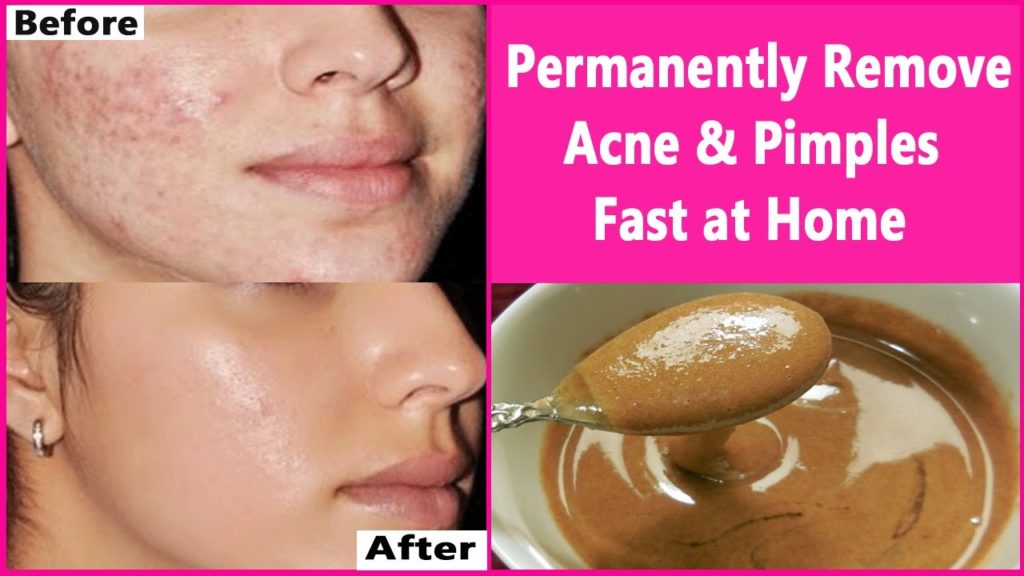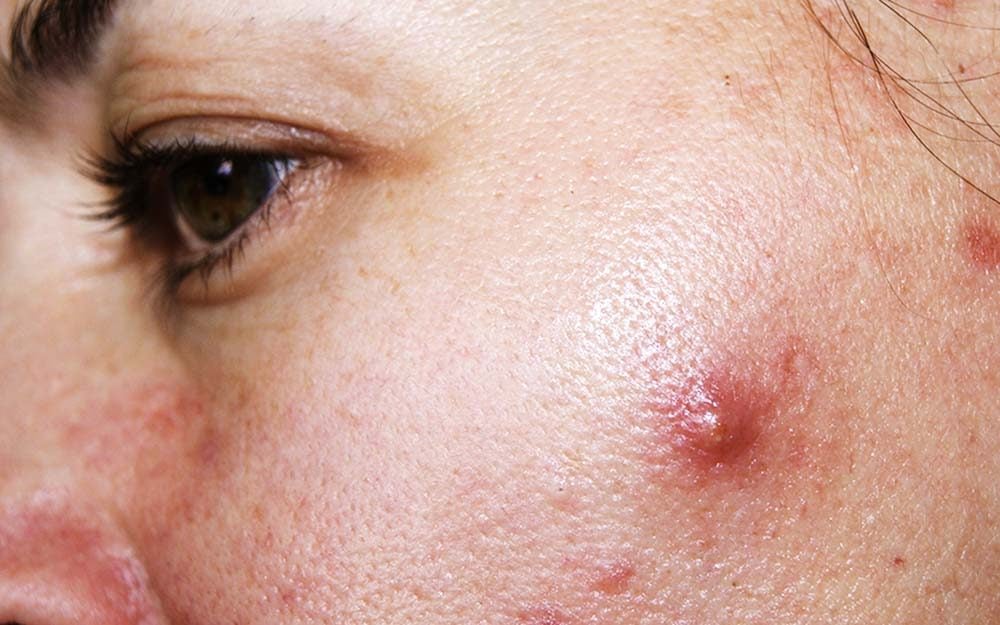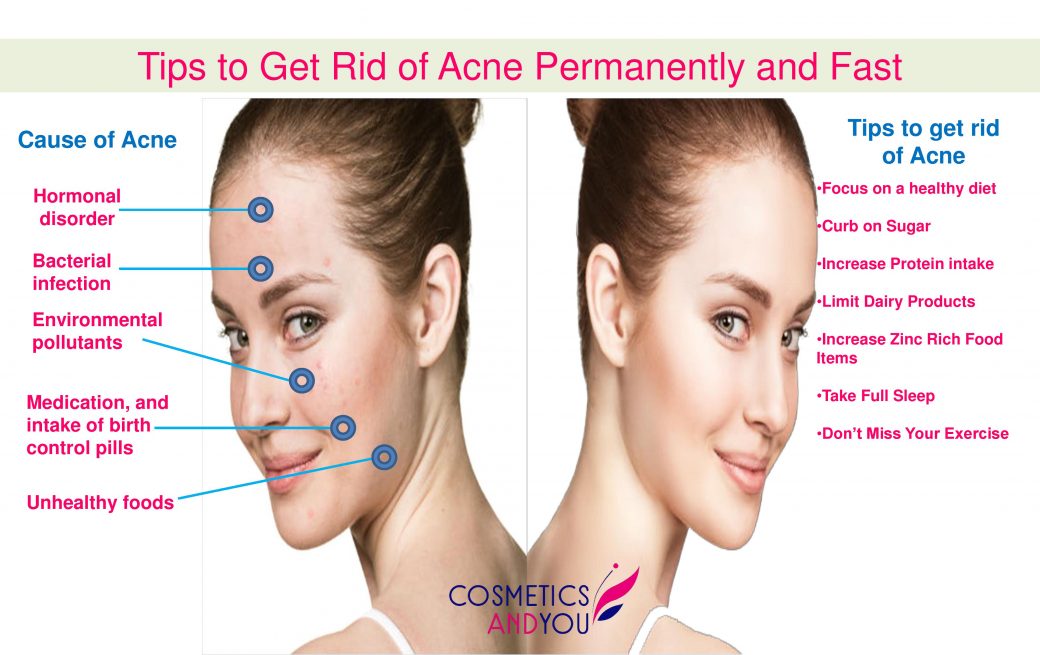Table of Content
According to 2017 research, the hormones released during periods of stress may increase sebum production and inflammation, making acne worse. These small studies suggested a low glycemic diet may help those with acne-prone skin. Additional larger, longer studies are needed. Eating high GI foods causes a spike in insulin, which likely increases sebum production. As a result, high GI foods may directly affect the development and severity of acne.

This process can be painful, but has been shown to cut down acne 50% on average. In particularly troublesome cases of acne, a specialized drug known as accutane can be prescribed. This is an incredibly intense retinoid treatment that has shown to almost completely remove all acne in users. However, it has the most serious side-effects of any acne-fighting drug and should be used with extreme caution.
How to Clear Mild Acne Fast
However, these changes take awhile to work and won't clear up acne fast, but help in the long run. Remove your makeup before exercising or going to bed. Old makeup can encourage the growth of bacteria and clog your skin. Before you sweat or sleep, take off your makeup. To make sure that it is completely removed, use a makeup remover, oil cleanser, or micellar water before cleansing your face.

Be aware that egg whites are uncooked food so there is a risk of foodborne illness. You can also add some fresh lemon juice to the egg white mask. You may need a carrier oil, such as olive oil or castor oil, to prevent irritation.
Moisturize with aloe vera
Prescription-strength acne treatments are available. A 2019 study with people ages 10 to 24 found that drinking whole milk three or more days each week was linked to moderate or severe acne. According to a 2017 study, tea tree oil may be an effective substitute for topical and oral antibiotics that could cause bacterial resistance if used long term. Some people like using face masks, especially if their skin is very oily.

Apply essential oils to active pimples. Neem oil and tea tree oil are thought to have antimicrobial properties that can kill acne-causing bacteria. Dab a drop of diluted version of tea tree oil or neem oil on each spot, or wet a cotton swab and wipe it over problem areas. Honey has a variable pH from 3 to 6, but at a pH between 3 and 4, it contains AHA's that will exfoliate skin.For physical exfoliation, consider purchasing a konjac sponge. It is gentle enough for usage upon your face.For physical exfoliation, consider using oatmeal as an exfoliate. Mix oatmeal with honey and rub it onto your face for 2-3 minutes, and gently rinse away the residue with warm water.
How to Get Rid of Acne
The cucumbers help to reduce redness and fight off dark spots while the oatmeal soften and soothes irritated skin. Blend the two together in a food processor until it forms a paste, and then apply it to your skin for minutes before washing off with warm water. Benzoyl peroxide kills bacteria that causes acne, reduces the size of pimples, and opens up your pores. You can buy spot treatment products that you can apply directly onto the pimples and acne. These products come in gels and creams.

For UVA protection, a sunscreen with a high UVA protection of PA+++ or higher of PA++++ as recommended, especially to treat PIE. PPD is the UVA equivalent of SPF; use a sunscreen with a minimum of PPD20. The PA+ system has a + that corresponds to a tier of PPD protection. Of note, different countries use different PA systems. Japan and Taiwan changed their PA system to a 4+ tier system while Korea uses a 3+ tier system.
Make a mixture using six leaves of fresh mint and one raw egg white beaten until frothy. Crush a half of a cucumber to form a fine paste, then add it to the mint-egg mixture and blend. Apply the mask over the affected area for 15 minutes and wash away with water. Make a mask by mixing together a tablespoon of almond powder, a teaspoon of honey and a teaspoon of lemon. Apply the mask over the affected area for 15 minutes, then rinse away with water. The citric acid in lemon juice has bleaching qualities, while the catecholates in potatoes help lighten the skin.

Exfoliation is the process of removing the top layer of dead skin cells. It may improve acne by removing the skin cells that clog pores. In one small 2017 study funded by a skin care company, 30 individuals with mild or moderate acne used a three-step facial treatment twice daily for 6 weeks.
Efficacy of a twice-daily, 3-step, over-the-counter skincare regimen for the treatment of acne vulgaris. In one small 2016 study, 38 patients with acne received eight microdermabrasion treatments at weekly intervals. The participants with acne scars showed some improvements following the treatments. Standard clinical treatments are the most effective for reducing acne. You can also try home treatments, though more research on their effectiveness is needed. Always use effective sunscreen products.
If you use a smartphone, you can also use the drawer menu of the browser you are using. Whether it’s a Windows, Mac, iOS or Android operating system, you will still be able to bookmark this website. Use care when using brightening creams. If you deal with it early, the less likely it is that the acne pimples become post-inflammatory hyperpigmentation spots or acne scars. Azelaic acid is available only by prescription as a 15% gel, often used to treat rosacea, and a 20% cream, more commonly used for hyperpigmentation spots.
Blend the juices and apply the mixture over the pigmentation. Use these products according to the product labels and consult your doctor if you have any questions or side effects. You might be tempted to scrub the skin to remove the spots but this can actually worsen the condition and prolong their duration. Antibacterial activity of ethanolic extract of cinnamon bark, honey, and their combination effects against acne-causing bacteria. Healthline has strict sourcing guidelines and relies on peer-reviewed studies, academic research institutions, and medical associations. You can learn more about how we ensure our content is accurate and current by reading our editorial policy.

Clay masks are especially helpful for this. If you use them, make sure you choose one made for people with acne, and that you only leave it on as long as the directions state. Usually masks are used one to two times per week. Ask your dermatologist about oral medications if your acne persists. Antibiotics work by controlling the growth of the bacteria that can cause acne to develop. Whiteheads form when oil from the glands combines with dead skin cells to form a plug.
She has over 15 years of experience in the field and specializes in cosmetic dermatology. Dr. Holcomb earned an MS in Public Health and Parasitology from The Tulane University School of Public Health and Tropical Medicine and an MD from Tulane University School of Medicine. She also completed her residency in dermatology as Chief Resident at Saint Luke’s-Roosevelt Hospital Mount Sinai. This article has been viewed 89,819 times. Kojic acid is an antioxidant that works by breaking down melanin. It is available in skin-lightening cosmetics in 1-4% concentrations.
Aloe reduces inflammation, helps remove oil, and cools your skin. This can help alleviate some of your acne. Get an aloe leaf and cut off a small section. Spread the aloe gel paste onto your acne. If you don't have sensitive skin, you might try using a cleanser that contains an active ingredient such as salicylic acid or benzoyl peroxide.

No comments:
Post a Comment